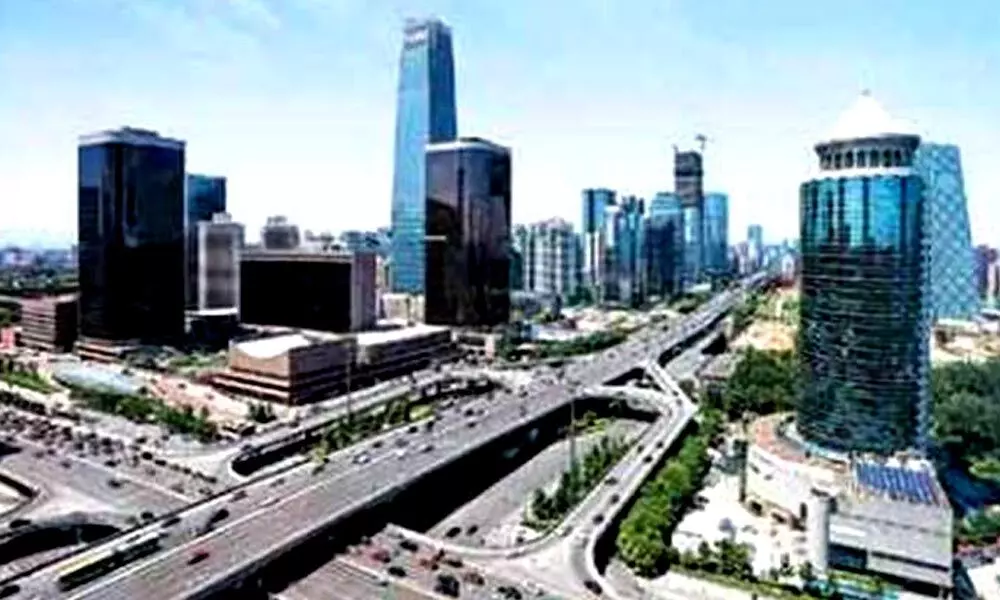How Smart cities will improve urban dwellers'quality of life
The focus is on sustainable and inclusive development by creation of replicable models which act as lighthouses to other aspiring cities
image for illustrative purpose

CITIES are nation's engines of economic growth – 75 per cent of national income comes from the cities. Growing urbanisation is leading to an increase in population in urban areas which are centers of economic and social influence. It is estimated that India's city population will nearly double to 600 million people by 2030, while the rural population will decline.
What is a Smart City?
Smart cities mission was launched in June 2015 by the Government of India. The objective of the smart cities mission is to drive economic growth and improve the quality of life of people by enabling local area development and harnessing technology that leads to smart outcomes. The focus is on sustainable and inclusive development by creation of replicable models which act as lighthouses to other aspiring cities.
Smart cities will provide core infrastructure, clean and sustainable environment and improve the quality of life of citizens through the application of 'smart solutions'. Inclusive development will transform existing areas, including slums, into better planned human settlements, thereby, improving liveability in smart cities.
The six fundamental principles on which the concept of smart cities are based are:
1. Community at the core
2. More from less: ability to generate greater outcomes with the use of lesser resources
3. Cooperative and competitive federalism
4. Integration, innovation, sustainability
5. Technology as means not the goal
6. Convergence: Sectoral and financial convergence.
Selection of smart cities
The selection process of smart cities is based on the idea of competitive and cooperative federalism and follows a challenge process to select cities in two stages. In January 2016 based on an all-India competition, 20 cities were selected in Round one (Bhubaneswar, Pune, Jaipur, Surat, Kochi etc). Then 13 more cities were selected in May 2016 in a fast track round (Lucknow, Warangal etc). In round two, three, and four, 27, 30 and 9 cities were selected in September 2016, January 2017 and January 2018 respectively (Amritsar, Kalyan, Thiruvananthapuram, Naya Raipur, Silvassa, Erode etc). In total, 99 cities have been selected to be developed as smart cities.
Implementation of the smart cities mission
Participation of the private sector through Public Private Partnership (PPP) has been emphasised in the implementation of the mission. Citizen's aspirations were captured in the smart city proposals (SCPs). A Special Purpose Vehicle (SPV) for each smart city has been created and is promoted by the State/UT and the Urban Local Body jointly having 50:50 equity share holding. The SPV will convert the SCPs into projects through Project Management Consultants (PMCs) and implement them. Some State governments have adopted the Swiss challenge approach for finalising the tenders.
Classic saucer champagne glass architecture model
Current city infrastructure exists in silos which will be replaced by unified ICT (Information and Communication Technology) architecture. The evolved unified ICT architecture can be modelled as "Classic saucer champagne glass". The wide flat bottom base depicts a multitude of field devices and sensors. The saucer shaped bowl on the top depicts being filled with city applications and citizen's services. The long stem depicts all the common layers viz., last mile communications, gateways, city data reservoir in the cloud.
Applications of ICT and IOT tech and role of 5G
In the implementation of the following integrated features of smart cities, opportunities exist for deployment of ICT and IOT (Internet of Things): citizen participation, economy and employment, health, education, open spaces, housing and inclusiveness, transportation and mobility, providing all facilities at walkable distance, parking spaces, IT connectivity, intelligent government services, energy supply, water supply, wastewater management, ensuring water/ air quality, energy efficiency, underground electric wiring, sanitation, waste management, safety.
Smart electricity meters, smart street lights, smart buildings, automobiles, smart infrastructure, smart water, smart gas, smart traffic, smart environment, smart sewage disposal etc., are going to use smart sensors and controllers, communication modules, gateways and data concentrator units. Through smart parking solutions using IOT technology, the vacant car parking slots can be sensed and cars can be directed. Telecom antennas can be installed on smart poles which can also be used for street lighting, for mounting Intelligent traffic systems, for mounting surveillance cameras. By effectively leveraging telecom technologies, smart cities can connect various 'things', for example, sensors, devices, analytic tools, to each other either directly or via the internet.
The operation of smart cities relies enormously on IOT and 5G wireless networks are IOT enablers. By offering fast connections, reliability and capacity at lower costs, 5G is a critical element for the cities to access the infrastructure, devices and people. 5G offers the capacity to enable additional smart city capabilities and applications that require high bandwidth and low latency.
Way forward
It is no longer enough simply to deploy sensors - governments need to demonstrate their meaningful impact on the population. The premise of smart city has evolved from a technology centre project to one that leverages technology to create a sustainable and citizen centric environment. Smart cities need to be a judicious mixture of grey, green, and blue infrastructures. Grey infrastructure provides transport, health, communication, education etc. Green infrastructure provides trees, gardens and parks. Blue infrastructure provides wetlands and water streams.
(The author is a former Advisor, Department of Telecommunications (DoT), Government of India)

